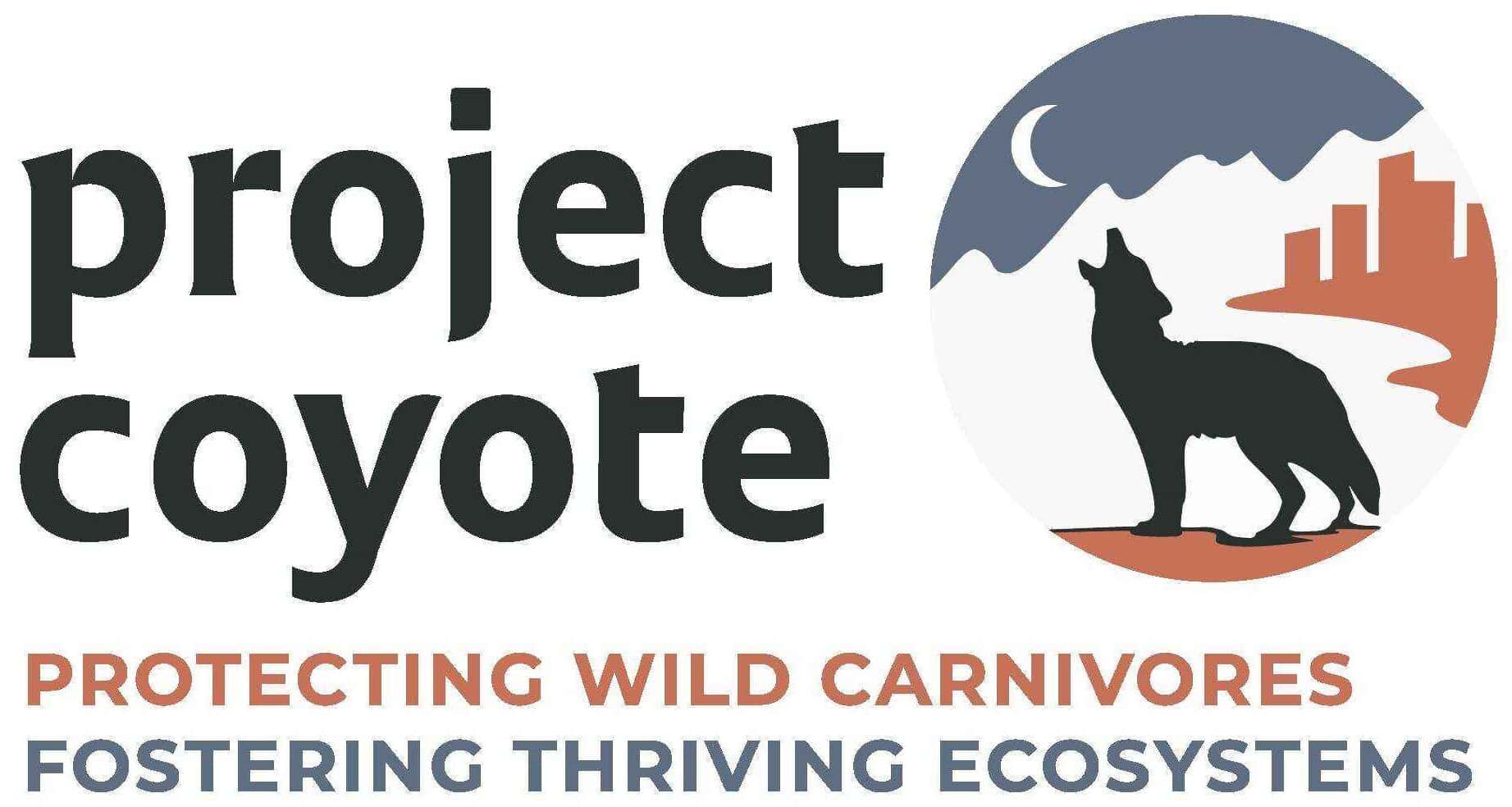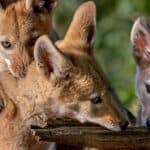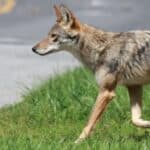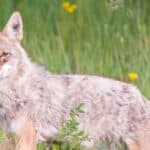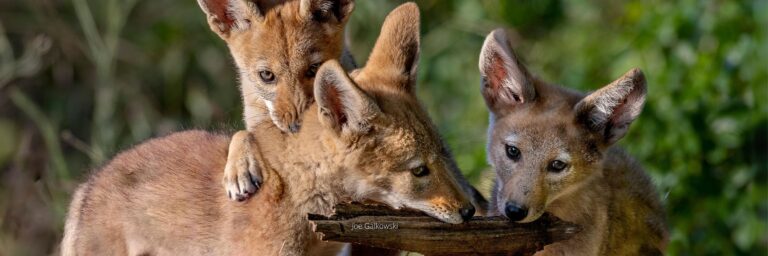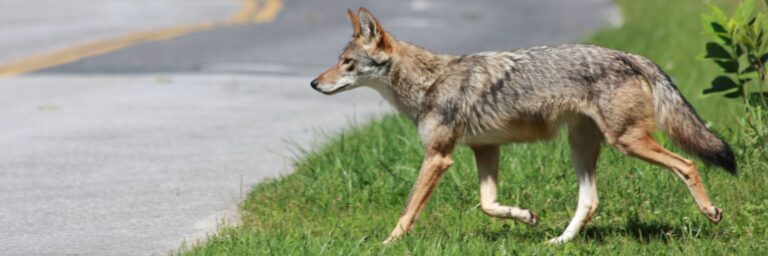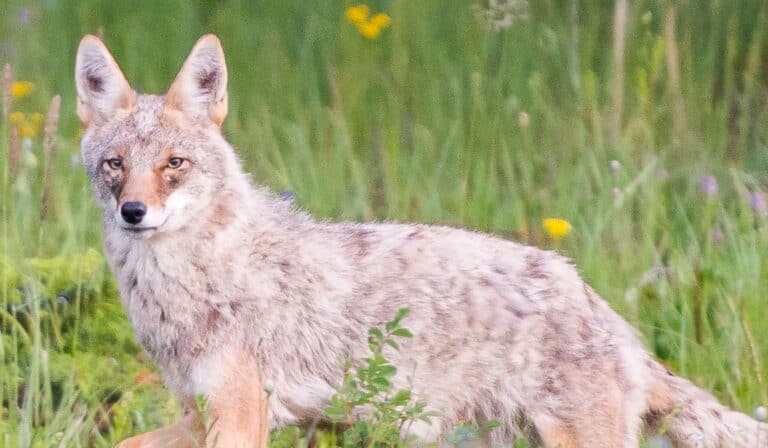We were honored this past August to receive a visit from a remarkable young conservationist, seven year-old Brooke Sahanaja and her mother, Sabrina. It seems that Brooke had become so concerned about coyotes disappearing from the area near their home outside of Los Angeles, that she took it upon herself to become a coyote advocate. In addition to learning about the hardships that coyotes endure, and expressing her concern for them in a poster, Brook set out to raise money to donate to an organization that seeks to protect coyotes. Sabrina said that Brooke and she decided that the organization they felt most deserved their support was Project Coyote. We could not be more grateful or impressed by their generosity, spirit and dedication. Sabrina and Brooke arrived at the Project Coyote office to give Project Coyote Founder and Executive Director Camilla Fox a cashier’s check in the amount of $145.00. As you can see in this video of Brooke’s conversation with Camilla, her commitment to protecting coyotes is inspiring. Following their visit we asked Brooke and Sabrina a few questions about their interest in helping wildlife. Our questions and their responses appear below. Be prepared to feel reassured that the next generation will act as conscientious stewards of wildlife and the natural world.
BROOKE SAHANAJA
“Coyotes have families just like us.”
How did you first become aware of coyotes, and why did you decide to help them?
I became aware of coyotes when they used to howl at nights where I live. Then the builders came and started building lots of new homes in our area and I stopped hearing them. I once saw a coyote roaming down the sidewalk and it looked skinny and hungry. It made me sad. Then one day when I was at my after school program, I drew a picture of a coyote because I missed them. I wanted to help them because I feel bad that they were being chased away from the land they used to live on.
What do you know about coyotes that young people your age could learn?
I think that they could learn that coyotes are actually wonderful animals, and that they are just looking for food so they can survive and to feed their pups. Coyotes have families just like us. They have a mom, they have a dad and they have pups. And when the home builders took over to build new homes, they chased the rabbits away, which removed an important food source, and they chased the coyotes away, too. So now the coyotes are going closer people’s houses because they are trying to find food to keep themselves alive. Coyotes also help keep this world balanced.
What do you hope will change about the way people treat coyotes?
I hope that people will stop hunting coyotes and learn to coexist with them. Because how would we like it if one of the coyotes came in and shot one of the people that we love or care about and killed that person? How would we feel? I think we would feel sad because we love that person and that’s exactly what we are doing to the coyotes. We’re just killing and hunting them without even caring about it. The coyotes are just trying to survive without anyone killing them and they are being bullied. I hope that people will stop hunting them and learn to live with them so that the world will be a better and happier place.
What is next for you – will you continue to help coyotes, and if so how?
Yes. I will continue to help coyotes and raise money for them and raise awareness by setting up a table in my neighborhood and at my after school program (CAP Academy) to sell water bottles, brownies and also to hand out pamphlets to educate people about coyotes. Coyotes don’t have a voice. I really like coyotes and I am very passionate about my fundraiser. I’ve have been doing this for two and a half years and I’m very excited about this. I believe that raising money for coyotes is a good idea and I will keep continuing to do so.
SABRINA SAHANAJA
“We should take the high road in finding ways to live peacefully with coyotes and other wildlife and help them so that future generations can enjoy them and see the beauty in the diversity of this planet.”
You and Brooke reached out to Project Coyote in a beautiful way. What about Project Coyote caught your attention?
What caught my attention is the fact that it is a non-profit organization dedicated to improving the welfare of coyotes and educating people on simple changes we can make so that we can live peacefully with them.
Tell us about Brooke’s interest in helping coyotes. What did you observe as she became increasingly committed to helping them?
Brooke missed hearing the coyotes sing at night and I think it made her feel helpless knowing that they were being displaced because of the new home construction in our area. I noticed that as she thought of ways of how she could make a difference in the lives of coyotes even at her age and acting upon them, it gave her a sense of empowerment and motivation to do more.
What are your thoughts about the value of coyotes and protecting wildlife?
My thoughts are that we are all put on this earth for a reason, and because we as humans have a greater cognitive ability we should take the high road in finding ways to live peacefully with coyotes and other wildlife and help them so that future generations can enjoy them and see the beauty in the diversity of this planet.
Project Coyote’s Keeping it Wild Program fosters respect and compassion for wildlife among young people. How have you been so successful at facilitating Brooke’s interest in helping coyotes? And what advice do you have for other parents?
My husband and I listen to her and provide advice on what we think will work and won’t. We provide her with books about coyotes so she could learn more about these fascinating animals and help her with researching about them on the computer. As parents, we talk with her about wildlife and try to explain the importance of the circle of life and why we shouldn’t hunt animals but respect the animal’s place in ecology.
Learn more about young voices speaking up for wildlife by visiting Project Coyote’s Keeping It Wild Program.
